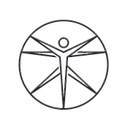Fit-Testing Services in Southern California: Ensuring Safety
Ryan Barclay January 20, 2022
OSHA has mandated Fit-testing for all employees who have potential exposure to harmful airborne contaminants—implementing these guarantees three vital factors when wearing a mask: the respirator’s seal, compatibility with other PPE equipment, and stability. Carefully testing and monitoring these elements ensures a safer work environment and protects the business from legal repercussions.
Because of this, fit-testing is required by OSHA before anybody wears a mask within a work environment. Additionally, these tests should be performed:
-
Annually
-
When facial changes occur (facial hair, weight, dental work)
-
If a different model, size, or shape of respirator is used
Two tests are available: qualitative and quantitative, each following its protocols and comprehensiveness.
Which fit-testing services should you purchase?
Both qualify under the regulations of OSHA, but each offers different levels of safety. Whichever you choose highly depends on the budget and environment. Here’s what you need to know about them:
Qualitative Fit Test (QLFT)
A qualitative fit test (QLFT) is the most common type used for mostly half-mask respirators. Performing this relies on the person’s sense of smell and taste to determine how tight the mask is sealed. To conduct this test, the mask is donned while one of the following four substances is released:
-
Irritant smoke (involuntary cough reflex)
-
Isoamyl acetate (banana smell)
-
Saccharin (sweet taste)
-
Bitrex® (bitter taste)
If the user smells, tastes, or is affected by the above substances, during the seven one-minute performed exercises: normal breathing, deep breathing, head movement (side to side, up and down), talking, bending over (or jogging on the spot), normal breathing again, means their mask isn’t adequately sealed enough.
Quantitative Fit Test (QNFT)
Unlike the QLFT, the quantitative fit test (QNFT) is usually implemented when the wearer uses a full-face respirator. Instead of depending on somebody’s instincts, a QNFT is more scientifically measured and thorough.
Performing a QNFT test requires a special machine that attaches to the respirator via a tube. When connected to the mask, it’ll measure the leakage around the face seal, producing a numerical result from 100 to 500 called the “fit factor”. To perform this test accurately, OSHA accepts three different protocols while following the same seven one-minute exercises explained above:
-
Generated aerosol – includes the usage of substances like corn oil
-
Condensation nuclei counter (CNC) – releases an ambient aerosol
-
Controlled negative pressure (CNP) – issues a vacuum that temporarily cuts off the air supply
Undoubtedly, the QNFT option is a lot more detailed than the QLFT. Whichever option you choose will depend on the mask-wearers environment. However, to split these straightforwardly, QLFTs are used for half-mask respirators, whereas QNFT is commonly implemented for full-face respirators.
If you require fit testing because your employees are confronted with potentially harmful airborne contaminants, we recommend contacting us. At Postured Ergonomics, we offer inexpensive, on-site fit-testing in Southern California that abides by OSHA compliance. Our all-inclusive services offer qualitative and quantitative testing, guaranteeing all clients optimal safety.

